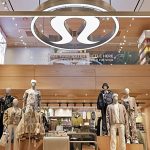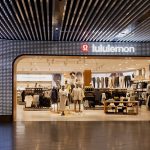As another illustration of the wide effect of the down economy, retailers and consumers are increasingly being victimized by organized retail crime groups. According to NRFs fifth annual Organized Retail Crime survey, nine out of ten retailers (92%) report that their companies were victims of organized retail crime during the past year, up 8% from 2008. Nearly three-fourths (73%) of retailers also reported the level of organized retail crime activity has increased over the past 12 months, an increase of 11% from 2008. Loss prevention executives from 115 companies, including department, discount, drug, grocery, restaurant and specialty retailers, completed the survey last month.
“The unfortunate economic events of the past year have played an intricate role in how criminals continue to rip off the retail industry,” said Joe LaRocca, NRF Senior Asset Protection Advisor. “Organized retail crime rings have realized that tough economic times present new business opportunities by stealing valuable items from retailers and turning around to sell the merchandise to consumers looking for bargains.”
Even with the economy forcing retailers to cut staff and do more with less, 42% of retailers say their company is allocating additional resources to address organized retail crime. According to the survey, the average retailer spends approximately $215,000 annually just on labor costs to fight organized retail crime. Some retailers surveyed spend far more, with 6% of respondents spending more than $1 million dollars a year to employ loss prevention executives devoted to organized retail crime.
The fight against organized retail crime would be futile without the support of top management. According to the survey, nearly half (49%) of respondents believe senior management in their company understands the seriousness of the issue. For the first time in the surveys history, NRF also asked loss prevention executives whether they felt law enforcement had a firm grasp on the issue; 38% agreed that police officers, detectives and federal law enforcement understood the complexity and severity of organized retail crime.
Thanks to the new partnerships formed with Federal and local law enforcement officials, retailers have had some success identifying stolen merchandise or gift cards at physical fence locations such as pawn shops and temporary stores (60%) and through online e-fencing operations (60%), where stolen merchandise is sold through online auction sites.
NRF said organized retail crime is not only an isolated problem in a handful of areas across the country. According to the survey, a staggering 72% of retailers have identified organized retail crime syndicates who are exporting goods outside of the U.S. or across state lines. Additionally, 28% found that criminal groups under current investigation have connections to street gangs with international connections.
When asked how they would rank organized retail crime as a threat to their company, nearly one-third (29%) of retailers gave organized retail crime a “four” or “five” rating, identifying the problem as severe or significant. On average, retailers gave organized retail crime a rating of 2.87 on a five-point scale.















